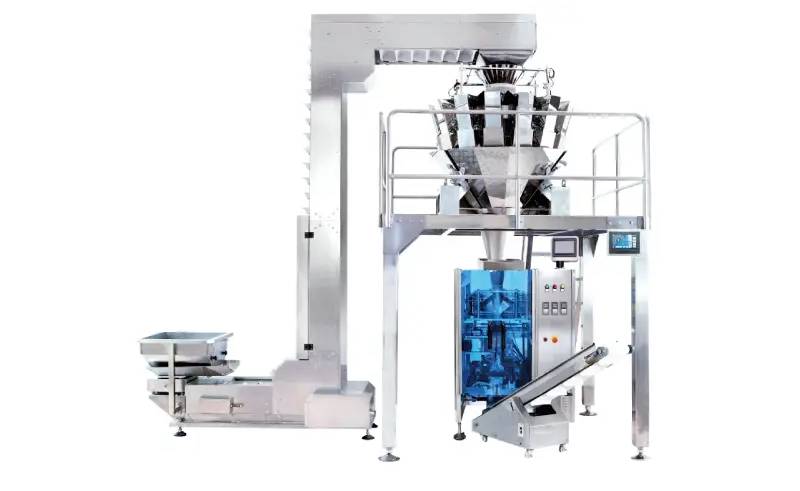In today’s fast-paced manufacturing environments, cup filling machines have become indispensable tools for enhancing efficiency, precision, and versatility in production lines. These innovative machines automate the filling process, ensuring consistent and accurate measurements while accommodating various product types and packaging needs. Let’s delve into the transformative impact of cup filling machines on modern production and explore the different types, benefits, and applications they offer.
Introduction To Cup Filling Machines
Cup filling machine plays a pivotal role in streamlining production processes across industries such as food and beverage, pharmaceuticals, cosmetics, and more. These machines are designed to automate the task of filling containers, typically cups or containers of various sizes, with precise amounts of product. By automating this critical stage of production, cup filling machines eliminate human error, boost productivity, and ensure uniformity in every batch.

Understanding The Role Of Cup Filling Machines
The primary function of cup filling machines is to accurately dispense specific quantities of a product into containers. This automation not only saves time but also minimizes wastage and ensures consistent product quality. By integrating cup filling machines into production lines, manufacturers can optimize their processes, reduce labor costs, and meet the increasing demands of consumers for standardized packaging.
Benefits Of Automating Filling Processes
Automating filling processes with cup filling machines offers numerous advantages. Firstly, it significantly reduces the risk of overfilling or underfilling containers, maintaining product integrity and reducing material waste. Secondly, these machines enhance efficiency by operating at high speeds, keeping up with demanding production schedules. Moreover, automation frees up human resources for more complex tasks, ultimately improving overall operational effectiveness.
Types Of Cup Filling Machines
Cup-filling machines come in several configurations tailored to different production needs:
- Rotary Cup Fillers: Ideal for high-volume production, these machines can fill multiple cups simultaneously, maximizing throughput.
- Inline Cup Fillers: Suited for smaller-scale operations, these machines fill cups sequentially along a conveyor belt, offering flexibility and space efficiency.
- Volumetric Cup Fillers: Use volumetric measurement methods to dispense precise amounts of product, making them suitable for granular or free-flowing materials.
- Auger-Based Fillers: Employ auger mechanisms to accurately dispense powdered or fine-grained products, ensuring consistency and uniformity.
Choosing The Right Machine
Selecting the appropriate cup filling machine depends on factors such as production volume, product type, container size, and desired automation level. Manufacturers should assess their specific requirements and consult with experts to determine the most suitable machine that aligns with their production goals.
Efficiency And Speed
One of the standout advantages of cup filling machines is their ability to significantly enhance production efficiency and output. These machines can fill hundreds or even thousands of containers per hour, far surpassing manual filling methods. By automating this crucial aspect of production, manufacturers can meet tight deadlines and capitalize on market opportunities more effectively.
Real-life examples abound of businesses that have experienced dramatic improvements in efficiency after adopting cup filling machines. For instance, a snack food manufacturer was able to triple its production capacity and reduce labor costs by 30% within months of implementing an inline cup filling system.
Precision And Accuracy
Precision is paramount in filling operations, especially in industries where exact measurements are critical for product quality and compliance. Cup filling machines excel in delivering precise volumes consistently, ensuring uniformity across batches. This precision not only enhances product quality but also reduces material wastage and associated costs.
Importance Of Consistency
Consistency in product filling is vital for consumer satisfaction and brand reputation. Cup filling machines guarantee uniformity in each package, whether it’s liquid, solid, or powdered. This reliability minimizes variations in product weight or volume, meeting regulatory standards and customer expectations consistently.
Versatility In Product Handling
Cup filling machines are incredibly versatile, capable of handling a wide range of products including liquids, pastes, granules, powders, and even delicate or irregularly shaped items. Manufacturers can adapt these machines to accommodate diverse packaging needs, from single-serve cups to larger containers, and use various materials such as plastic, paper, or foil.
Flexibility In Packaging
Another advantage of cup filling machines is their flexibility in packaging sizes and materials. Whether filling individual portion cups or bulk containers, these machines can be adjusted to meet specific packaging requirements. This adaptability allows manufacturers to respond quickly to changing market trends and customer preferences without compromising efficiency or quality.
Conclusion
In conclusion, cup filling machines represent a paradigm shift in modern production, offering unparalleled efficiency, precision, and versatility. By automating filling processes, manufacturers can optimize their operations, reduce costs, and deliver consistent, high-quality products to consumers. The choice of cup filling machine depends on individual production needs, but the transformative impact on overall efficiency and output is undeniable. As industries evolve and consumer demands continue to grow, cup filling machines will remain at the forefront of innovation, revolutionizing the way products are packaged and delivered worldwide.


